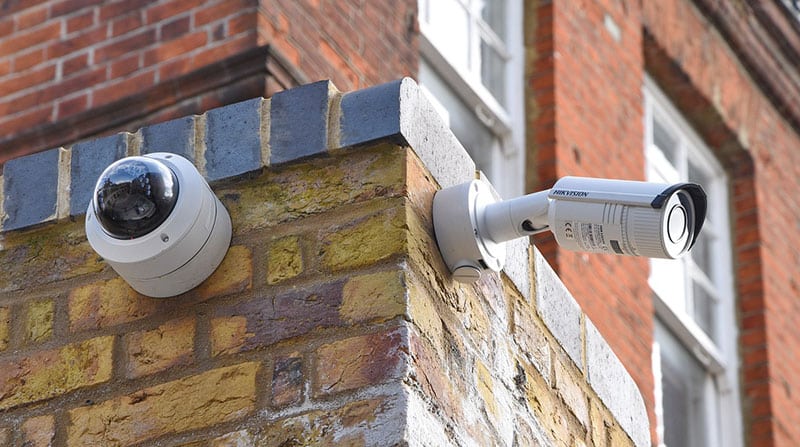Introduction:
Closed-Circuit Television, Or CCTV, Is A Widely Utilized Technology That Can Be Used For A Variety Of Purposes, Including Security Monitoring And Surveillance. This Thorough Reference Examines CCTV In Its Entirety, As Well As Its Background, Operation, Various System Types, Uses, Legal Issues, And Potential Future Developments.
Understanding CCTV:
Overview Of CCTV:
• Complete Form: Closed-Circuit Television Is Referred To As CCTV.
• Definition: It Describes A Closed System In Which Video Cameras Send Signals To Designated Displays.
• Goals: The Main Uses Of CCTV Systems Are Security, Monitoring, And Surveillance.
The Background Of CCTV:
CCTV Technology’s Evolution:
• Early Developments: Originally Installed Mainly For Security Purposes In Banks And Government Buildings, The First CCTV Systems Date Back To The Middle Of The 20th Century.
• Technological Developments: CCTV Has Become An Increasingly Sophisticated Surveillance Tool Thanks To Developments In Digital Storage, Video Recording, And Transmission.
• Popularity Growth: As A Result Of Growing Security Concerns And Technical Developments, CCTV Became More Widely Used In The Late 20th And Early 21st Centuries.
The Operation Of CCTV:
CCTV System Mechanisms:
• Components: A Network Of Wired Or Wireless Connections, Cameras, Displays, Recording Devices, And Other Components Make Up A CCTV System.
• Camera Functionality: Video Footage Is Captured By Cameras And Sent To Recording Devices Or Monitors.
• Closed Circuit: CCTV Transmissions, In Contrast To Broadcast Television, Are Kept Inside A Closed System For Observation And Recording.
CCTV System Types:
Different CCTV Configuration Types:
• Analog CCTV: Conventional Systems That Transmit Signals Using Analog Cameras And Connections.
• IP CCTV: Current Systems That Employ Cameras Connected To The Internet Protocol (IP), Allowing Digital Data Transfer Over Computer Networks.
• Wireless CCTV: Systems That Eliminate The Need For Physical Cords By Connecting Cameras Via Wireless Technology.
CCTV Applications:
Various Applications Of CCTV Technology:
• Security Monitoring: Keeping An Eye On Homes, Companies, And Public Spaces To Prevent Crime And Improve Security.
• Traffic Management: Road Safety Is Improved, Traffic Laws Are Enforced, And Traffic Flow Is Monitored By CCTV Cameras.
• Industrial And Commercial Applications: Inventory Management, Worker Safety In Industrial Environments, And Production Process Monitoring.
• Public Safety: The Use Of CCTV In Public Areas Helps Law Enforcement Prevent And Investigate Crimes.
Legal Points To Remember:
Privacy And Regulation Concerns:
• Legal Framework: Data Protection, Privacy Rights, And Authorized Uses Are All Covered By Laws And Regulations That Differ Depending On The Jurisdiction And Control The Usage Of CCTV.
• Privacy Concerns: Weighing The Advantages Of CCTV Surveillance Against People’s And Communities’ Right To Privacy.
• Compliance: In Order To Avoid Legal Ramifications, Businesses And Organizations Installing And Using CCTV Systems Must Adhere To Legal Regulations.
Upcoming Developments In CCTV Technology:
Innovations And Advancements:
• High Definition Cameras: Resolution And Image Quality Will Continue To Be Improved.
• Artificial Intelligence (AI): Utilizing AI For Behavior Tracking, Facial Recognition, And Real-Time Video Analysis.
• Cloud-Based Solutions: Using Cloud Storage And Remote CCTV Footage Access Features.
• Internet Of Things (Iot) Integration: To Improve Automation And Data Analytics, CCTV Systems Are Integrated With Iot Devices.
Conclusion:
Since Its Early Analog Beginnings, CCTV Technology Has Seen Substantial Development To Become An Essential Instrument For Public Safety, Security, And Surveillance. Gaining Knowledge About CCTV’s Whole Definition, History, Modes Of Operation, Types, Uses, Potential Legal Ramifications, And Emerging Trends Will Help One Better Appreciate How Widely Used And Continuously Improving Technology Is. CCTV’s Function In Promoting Diverse Sectors And Defending Communities Is Still Crucial In Today’s Society, Even As It Develops Further.

